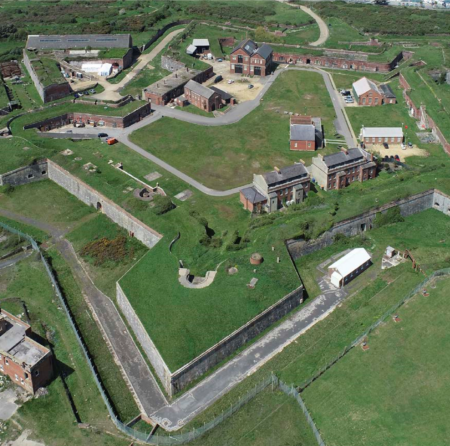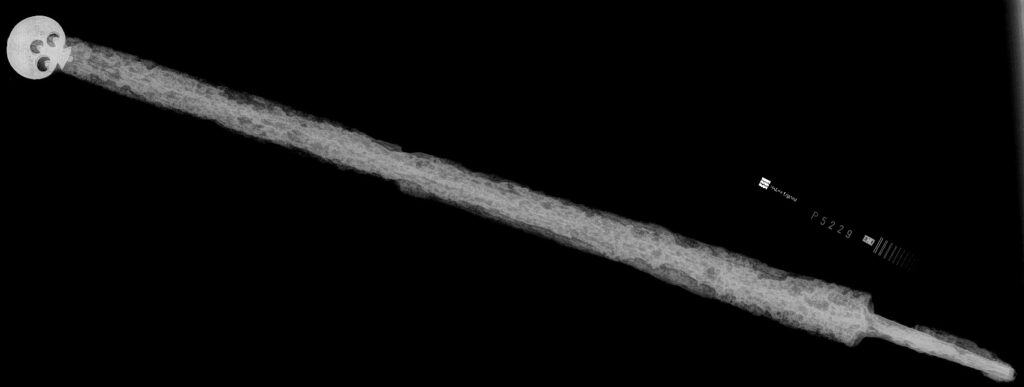Blog post by Phillip Brant-Simmons
It was an early start to the day on Tuesday to take the two Roman cavalry swords down to Portsmouth. It’s not every day you can say that you’ve taken nearly 2,000-year-old objects somewhere in your car!
These swords were found back in Easter at a metal detectorist rally in the North of the Cotswolds, and have been at Corinium Museum for a few months. They are an incredibly rare find, with single digit examples in the UK. Embarking on this journey of discovery was myself (Phillip) and Caroline Morris, Collections and Education Manager. It was a long 2 hour drive down to the south coast but a very smooth one. Our arrival at the 18th Century sea defences of Fort Cumberland was rather imposing with the looming walls of the fort. After making our way down the winding road we arrived and parked in the middle of the fort where we were met by Karla Graham, Senior Archaeological Conservator for Historic England. Inside the walls of the fort it was very windy and we were ever grateful that it was not pouring down with rain.

Fort Cumberland, May 2023 © Historic England
After signing in, we took the swords from the car to the x-ray lab that Historic England had and were shown, from a safe distance, the new x-ray machine that was sponsored by the Wolfson Foundation that they would be using. It was going to take a while for the preliminary x-rays to be taken and so we explored the fort a bit to learn a bit more about this historical place. We were also lucky enough to be shown some work that other conservators were working on, such as the finds from the Rooswijk, which was a Dutch trading ship that sank off the coast of Kent in 1740. Their swords especially were standout! We were also interviewed by the BBC about the day so far, and what we hoped the x-rays might uncover about the swords.
After a couple of hours, the first x-rays on the swords had been finished and we were able to inspect them with Karla Graham, Senior Archaeological Conservator. She explained that one of the swords showed tell-tale signs of being pattern welded, which is extremely rare to find and marks it as being particularly expensive and exotic; so naturally we were very excited to learn that one of the swords displayed this, we had no idea that this patterning was there underneath the corrosion. This would make this sword the first object in our collection to have pattern welding which is phenomenal. We were told that unfortunately due to the condition of the sword that even when they have been conserved the pattern welding would not be visible, which makes the x-ray invaluable as we never would have known otherwise. With this information in hand we began our long journey home, with ideas buzzing of how to display these objects alongside their x-rays.

©Historic England

©Historic England

On this close up you can see the “zig zag” patterns that makes up the pattern welding. ©Historic England
The next steps are to get the swords properly conserved, and then to get them on display! Stay tuned for more updates as the story of the swords unfolds.
Phillip Brant-Simmons
Collections Engagement Assistant
Copyright – The hard copy and digital documentation produced under this project will be the copyright of Historic England.










